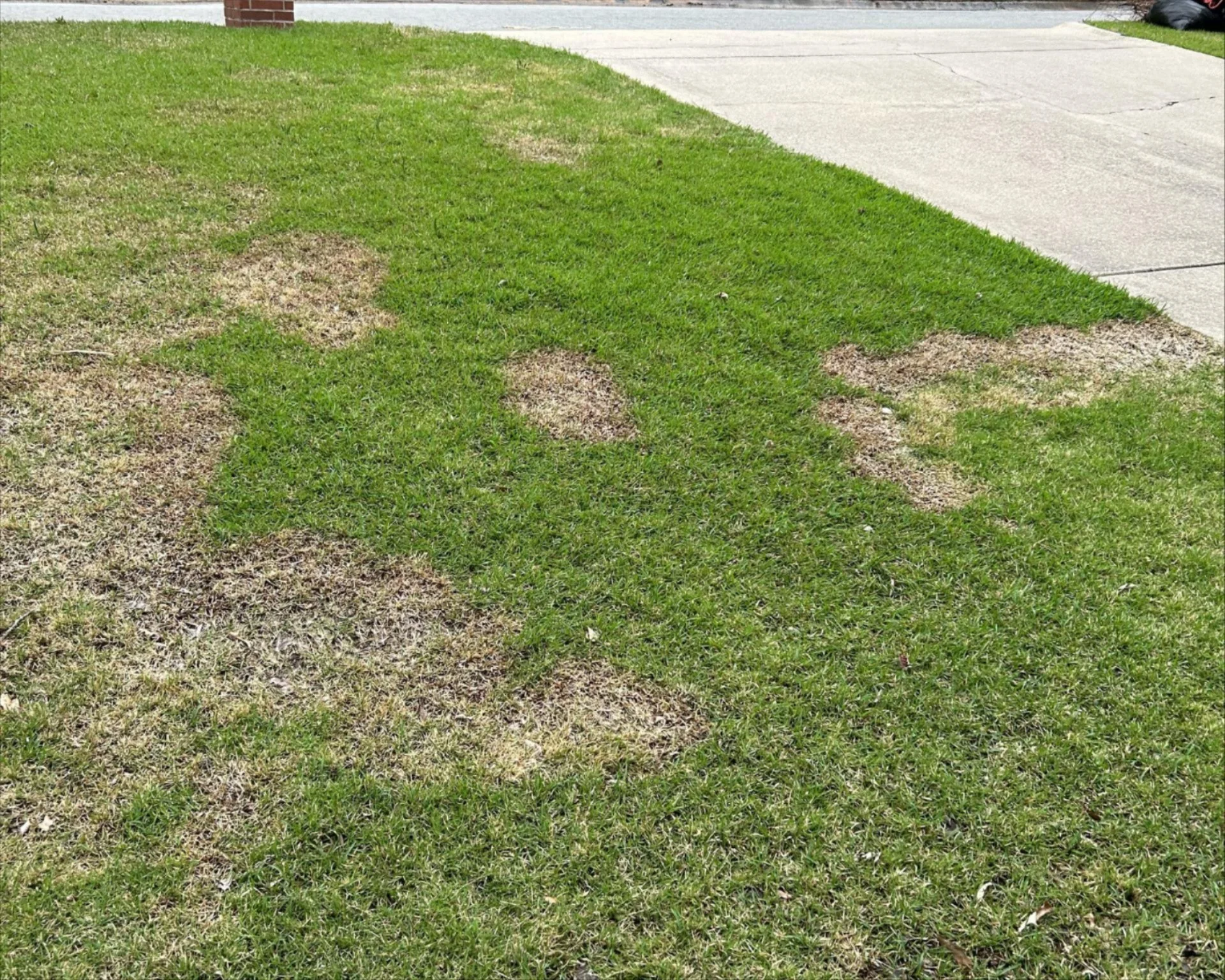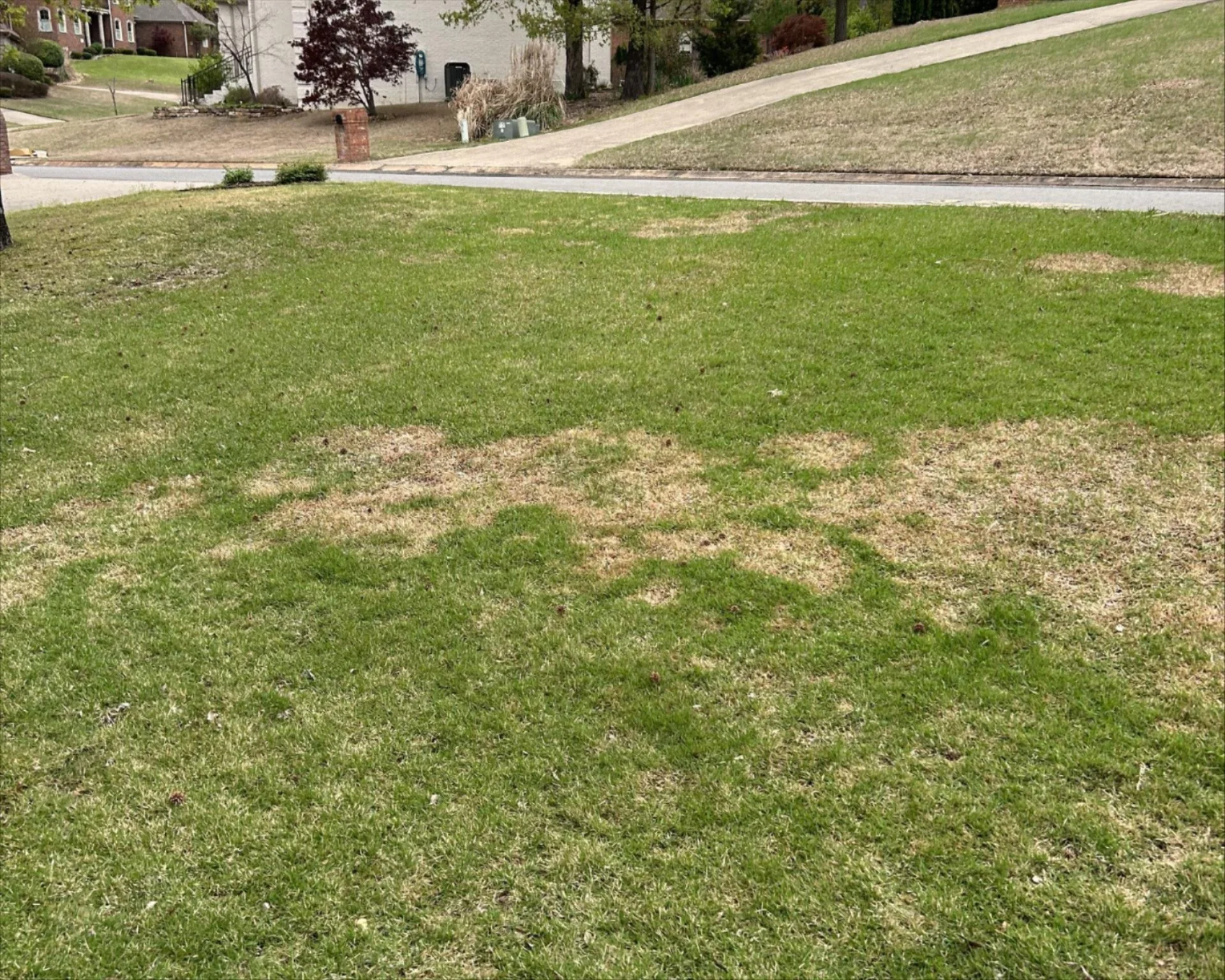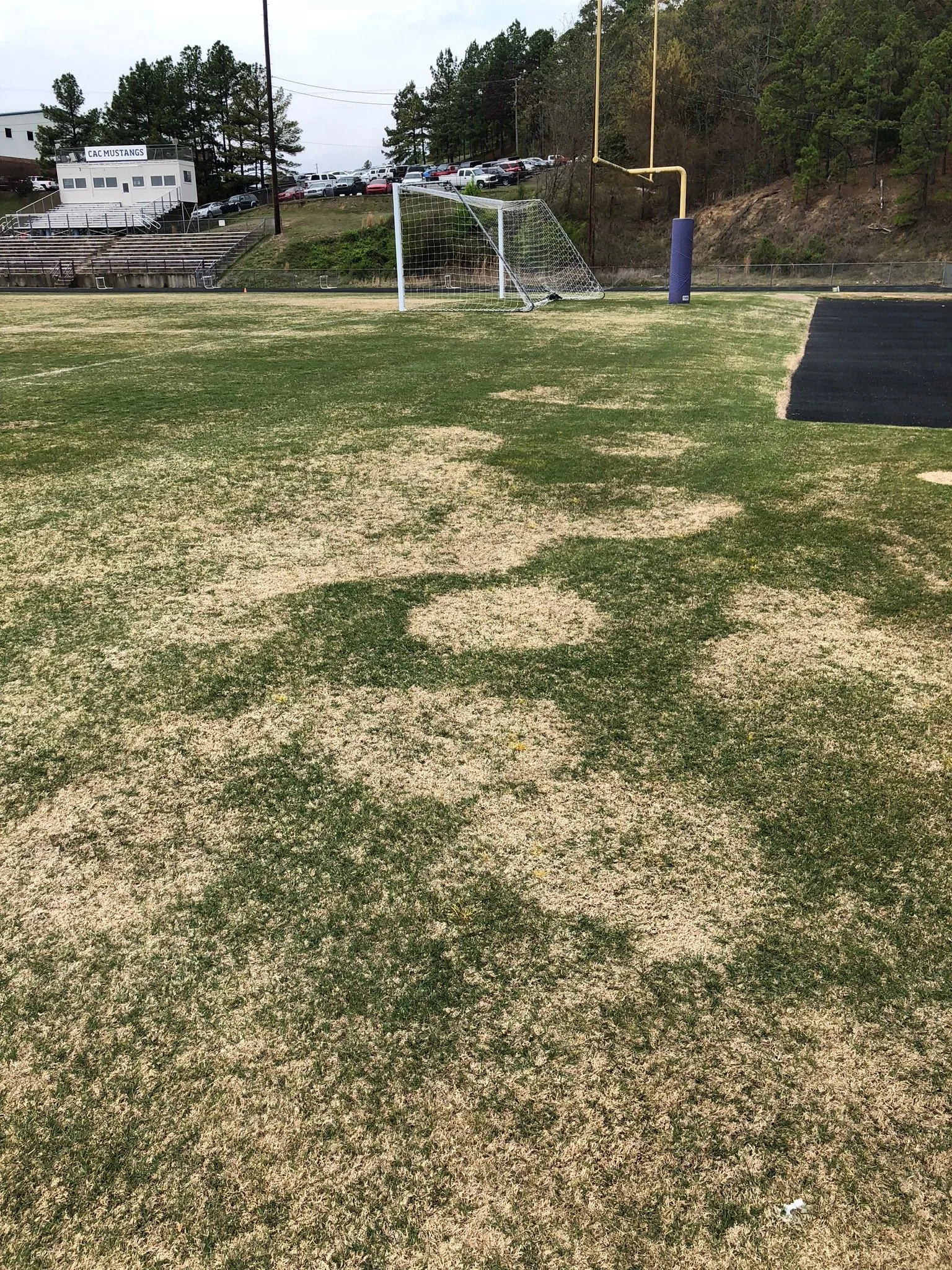Spring Dead Spot Fungus
How We Can Help
Spring Dead Spot (Ophiosphaerella spp.) is a destructive fungal disease primarily affecting manicured Bermuda, Centipede, and other warm-season grasses. It becomes most visible in spring during green-up, appearing as circular patches of dead, bleached grass that fail to recover. The disease develops in fall and winter, with symptoms only becoming evident as the surrounding turf begins to grow again in spring.
Commonly Affected Grasses:
Centipede
Bermuda (manicured low, usually playing fields)
☀️ Spring Dead Spot thrives in:
Cool, wet conditions in fall and winter.
Lawns with excessive thatch buildup or compacted soil.
Turf that has been over-fertilized with nitrogen late in the growing season.
Symptoms
🔍 Early Indicators:
Circular patches (6 inches to several feet in diameter) of dead, brown grass.
Patches remain dormant while surrounding grass greens up.
Infected areas may take months to recover or not recover at all.
⚠️ Advanced Symptoms:
Severely infected areas may have sunken patches from root and crown decay.
The roots of the affected grass are dark, rotten, and weak.
Weeds quickly invade damaged areas due to turf thinning.
🚨 Increased Lawn Vulnerability:
Grass infected with Spring Dead Spot is more susceptible to winter damage and drought stress.
Weak root systems make turf less resilient against other diseases and pests.
Prevention
Preventing Spring Dead Spot is the best defense against long-term lawn damage. Fungicides alone are not enough—cultural practices play a vital role in reducing disease severity.
🌿 Cultural Practices to Prevent Spring Dead Spot:
✅ Aerate the Lawn – Core aeration reduces soil compaction, improving root growth and drainage.
✅ Dethatch Regularly – Excessive thatch traps moisture, creating ideal conditions for fungal growth.
✅ Balanced Fertilization – Avoid high nitrogen applications in late summer or fall to prevent excessive growth that weakens turf before dormancy.
✅ Improve Drainage – Lawns with poor drainage retain moisture, increasing the risk of infection.
✅ Adjust Mowing Practices – Keep bermudagrass at the proper mowing height to encourage deeper root systems.
❌ No, there is no cure—only management strategies.
Complete control of Spring Dead Spot in a single growing season is uncommon.
It typically takes two to four years of proper cultural management and fungicide applications before acceptable control is achieved.
Once control is established, a less aggressive management strategy can be implemented.



